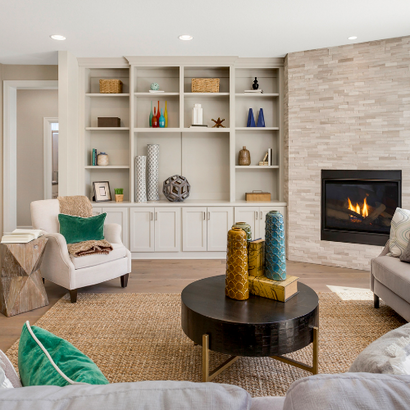Your Cart is Empty
Orders are processed within 1-2 business days, Mon-Fri., for regular and expedited orders.
Orders are processed within 1-2 business days, Mon-Fri., for regular and expedited orders.
Home Staging Advice for the Avid DIYer: 3 Key Steps

After years of TLC and memories, the time has come to put your house on the market. While the process might appear overwhelming, savvy DIYers are using it as an opportunity to stage their homes and bring in ideal buyers. The benefits of self-staging are significant: you can save money by eliminating third-party designers, you have more time to be intentional when sorting your belongings, and your asking price will be able to rise with the value of work you put into your house. Keep reading for tips to DIY your home for sale and bring in top dollar.
Maximize Your Curb Appeal

The outside of your home will always determine a buyer’s first impressions, so it’s important for things to look fresh and welcoming. Consider sprucing up your garden and lawn by defining their edges, pulling weeds, mulching, and reshaping any hedges or shrubs. It’s important that your primary plant features are nicely trimmed and generally easy to maintain. Add some seasonal color to your garden beds by planting, potting, or windowboxing various flowers that can endure whichever climate you’re selling in. Should you live in a region that receives hefty winters, it’s more important that all walking paths and driveways are plowed and salted to maximize the home’s accessibility.
Be sure that all shutters, siding, and gutters are properly power washed and receive a fresh coat of paint as necessary. One fun change that can be made to the outside of your home is altering the color of your front door to something bold and inviting that buyers will remember. Make sure you select a quality paint that is durable against the elements while still giving your home a pop of personality.
Just as clean lines and inviting colors can draw a potential buyer’s eye, so does the overarching neighborhood where your home is located. If you’re not quite sure what adjustments to make to your curb appeal, take a stroll around surrounding streets to see what features other families have in their yards that you might be able to add to yours. For some, this can mean permanent stone or cement curbing to act as a border between their garden and lawn. For others, it might come down to something as simple as a hanging wreath or an inviting lounge area on their porch.
Understand Your Investment

Regardless of how you go about selling your house, you will have to put money into it to get a profitable sale out of it. Improvements and remodels tend to be a natural part of any home’s lifecycle, and it’s important that all major projects are properly funded and timed in proportion to hitting the market. Expect to lighten and neutralize the colors of your rooms, update any old appliances, and even perform entire wall demolitions to support a more open concept feel.
If you decide to take on a larger task or multi-room remodel, make sure that you can do the job safely and correctly. Consider using a home equity line of credit to fund your materials or pay for a professional contractor. Not only will you receive a lump sum to put towards your projects, but the option is also tax-deductible when put back into these kinds of renovations.
Simplify & Stage

Funding the final touches to a self-stage doesn’t have to be intimidating either. If your move doesn’t overlap with selling your old home, use your existing furniture as example pieces. Here are some steps to consider:
- Clean, declutter, pack and organize
- Sort and dispose of (or donate) any belongings that are no longer needed or able to be used. You might be surprised by how much extra packing and clutter you can eliminate from your new home just by performing this simple step.
- Make sure that everything is neatly organized and that the space can still be viewed and highlighted as reliable storage for interested buyers. Renting a storage locker is another option that would guarantee your home more space to be properly viewed and considered.
- Rearrange furniture to maximize the size of the room. Remember to prioritize the layout of things to complement the flow and feel of the space, rather than what you might personally prefer. If your items are too dilapidated or already moved, consider upcycling old or secondhand furniture to make your rooms more comfortable and inviting. Though renting is always an option; using what you have also opens the door to reselling any of your refurbished projects to put some money back in your pocket.
- Keep decor to a minimum and try to balance the colors and heights in your rooms with simple wall hangings, potted plants, and earthy-toned area rugs. Avoid displaying trinkets, highly personalized items, or areas that might normally see high-traffic clutter, such as fridges or key and coat hangers. Attention to detail is essential when self-staging, but stepping back to enjoy the bigger, cleaner picture is just as vital.
Also in Color Confidential
Subscribe
Sign up to get the latest on sales, new releases and more …
Recent Articles
- What Paint Should I Use? Your Guide to the Right Product for Each Room

- How Builders Using C2 Paint to Position Themselves as Industry Leaders

- These Paint Color Palettes Can Transform Your Smaller Bathroom into a Luxurious Respite
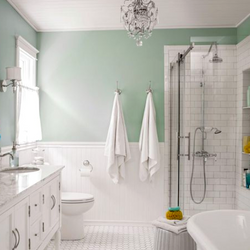
- 5 Ways to Harness the Power of Color in Your Interior and Exterior Paint Projects
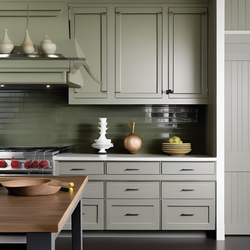
- The Ten Commandments of Choosing Color

- Refresh Your Home This Spring: Top Painting Projects (Plus Recommended Products!)
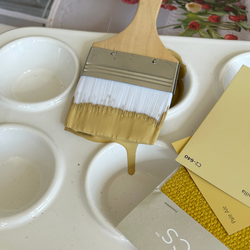
- The Ultimate Guide to Choosing the Perfect Deck Stain for Your Home
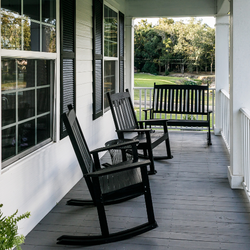
- Painting Kitchen Cabinets: Your DIY Guide to a Perfect Finish

- Boosting Your Home's Value: 6 Home Improvement Projects for Maximum ROI

- Supercharge Your Aspirations by Choosing the Right Paint Color

Categories
- 2020 Color of the Year
- architecture
- art basel
- bathroom paint colors
- bedroom colors
- best bedroom color
- best blue paint 2019
- best green paint
- best grey paint colors
- best grey wall colors
- best neutrals
- best paint colors
- best paint colors for 2020
- best white paint color
- black and white
- black paint
- blue mood board
- blue paint
- blue paint color
- blue paint colors
- C2 paint
- c2 partners
- c2paint
- calming bedroom colors
- calming paint colors
- ceiling paint
- ceiling paint color
- christmas list
- classic paint colors
- color combinations
- color of the month
- Color of the Year
- color of the year 2023
- color palette
- color theory
- color tips
- color trends
- design miami 2018
- design tips
- design trends 2021
- design trends 2024
- eco-friendly
- exterior paint colors
- feng shui paint colors
- full spectrum
- full spectrum color
- full spectrum paint
- gift guide
- gift guide 2021
- gray paint colors
- grey color trends 2010
- grey paint
- grey paint colors
- grey walls
- holiday gift guide
- holiday picks
- home improvement
- home office
- home painting
- home projects
- house paint
- house paint colors
- how to paint floors
- insider tips
- interior colors
- interior desi
- interior design
- interior design best paint colors
- interior design tips
- interior design trends
- interior designer
- interior paint
- interior paint colors
- luxury paint
- maximalism
- mediation room
- meditation
- meditation area
- mexico city
- millwork
- minimalism
- modern decor
- modernism weekly
- moodboard
- neon color trend
- nicole newkirk
- office paint colors
- orange
- paint
- paint color
- paint colors
- paint contractors
- painted furniture
- Philippa Radon
- stockholm design week
- surface design show
- sustainable interior design
- tiny homes
- travel
- trend report
- trends 2024
- vision board
- wall color
- wall paint
- white interior paint
- white paint
- zoe feldman
Subscribe
Sign up to get the latest on sales, new releases and more …
×
There’s a C2 Paint Dealer near you!
Visit the store to get exceptional, in-person service. Click below to see store details
See My Store